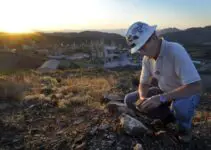Riaz Mamdani is the chair of DroneAid.co and the chief executive officer of Calgary-based Strategic Group.
The devastation in Ukraine is absolutely heartbreaking. Roads, buildings and entire cities have been destroyed. Millions of people need help, and Canadians have stepped up in many ways. Donations to charities that provide food, medical supplies, shelter and relocation services are being provided selflessly.
Yet still, in the midst of what feels like perpetual devastation, we continue to ask: What more can we do to help?
Sadly, two Albertans were recently killed while volunteering in Ukraine delivering supplies to people in desperate need. I am not the only one questioning how this tragedy could have been avoided.
As someone who has been a part of Calgary’s technology community for more than two decades, I know that humanitarian drones have evolved to a point where they can save lives without risking lives. Modern drone innovation can help us safely deliver supplies or conduct search-and-rescue (SAR) missions in dangerous environments.
For that reason we created DroneAid, a purely humanitarian non-profit initiative to deploy drone technology in Ukraine. As we see results in the country, we will explore ways to apply technology to other crises around the globe. The initiative is essential to improving the efficiency, safety and effectiveness of humanitarian efforts.
DroneAid came to fruition out of inspiration from the work of Ukrainian non-profit Revived Soldiers Ukraine. While they are not the only organization conducting humanitarian missions in the country, they are one of the few with existing infrastructure that have the capabilities to use cutting-edge drone technology in order to deliver medical supplies and perform dangerous SAR missions.
However, RSU could only allocate sufficient resources to initially acquire 10 drones despite requiring a fleet of 200. Draganfly Inc., a Canadian manufacturer, stepped up to the plate and donated three drones and committed to provide the remainder at cost.
Rather than feel the helplessness and despair of watching the crisis unfold, I donated additional drones and assisted their mobilization. It quickly became evident that I was not the only one wanting to help save lives. That is why I became the founding chair of DroneAid.
Our first drone arrived in Ukraine this month and is being used to deliver insulin, first aid and other medical supplies in dangerous hot spots, where sending an ambulance and driver could lead to their death. This is the first of many heavy-duty, multirotor unmanned aerial vehicles capable of ensuring the timely delivery of temperature-sensitive medical supplies and lifesaving equipment.
Our next set of five drones will be arriving shortly. These highly specialized, high-tech drones will also support non-military SAR missions using optical and infrared imaging, mapping and biometric measurement. Other drones en route to Ukraine will provide valuable situation assessment support with high-resolution optical and thermal imaging.
I have participated in many philanthropic causes over my career, but this is the first time I am 100-per-cent confident that my actions as a donor will directly save lives. As we developed this initiative, it was not a question of if I should donate, but of how much I would donate. I am humbled by the many like-minded people and organizations joining me in this endeavour.
It is increasingly clear that this North American-developed, lifesaving drone technology can prevent needless loss of life in all manner of humanitarian disasters, wherever it is needed in the future. DroneAid will become a continuous non-profit campaign to help non-profit organizations, such as RSU, that are poised to save lives immediately.
To the people of Ukraine: Our hearts are with you as you suffer in this needless, awful war. We know what more we can do. We will do it.
Keep your Opinions sharp and informed. Get the Opinion newsletter. Sign up today.


